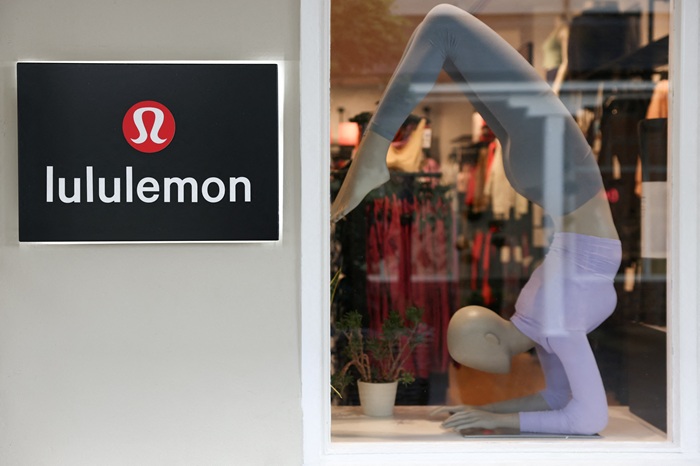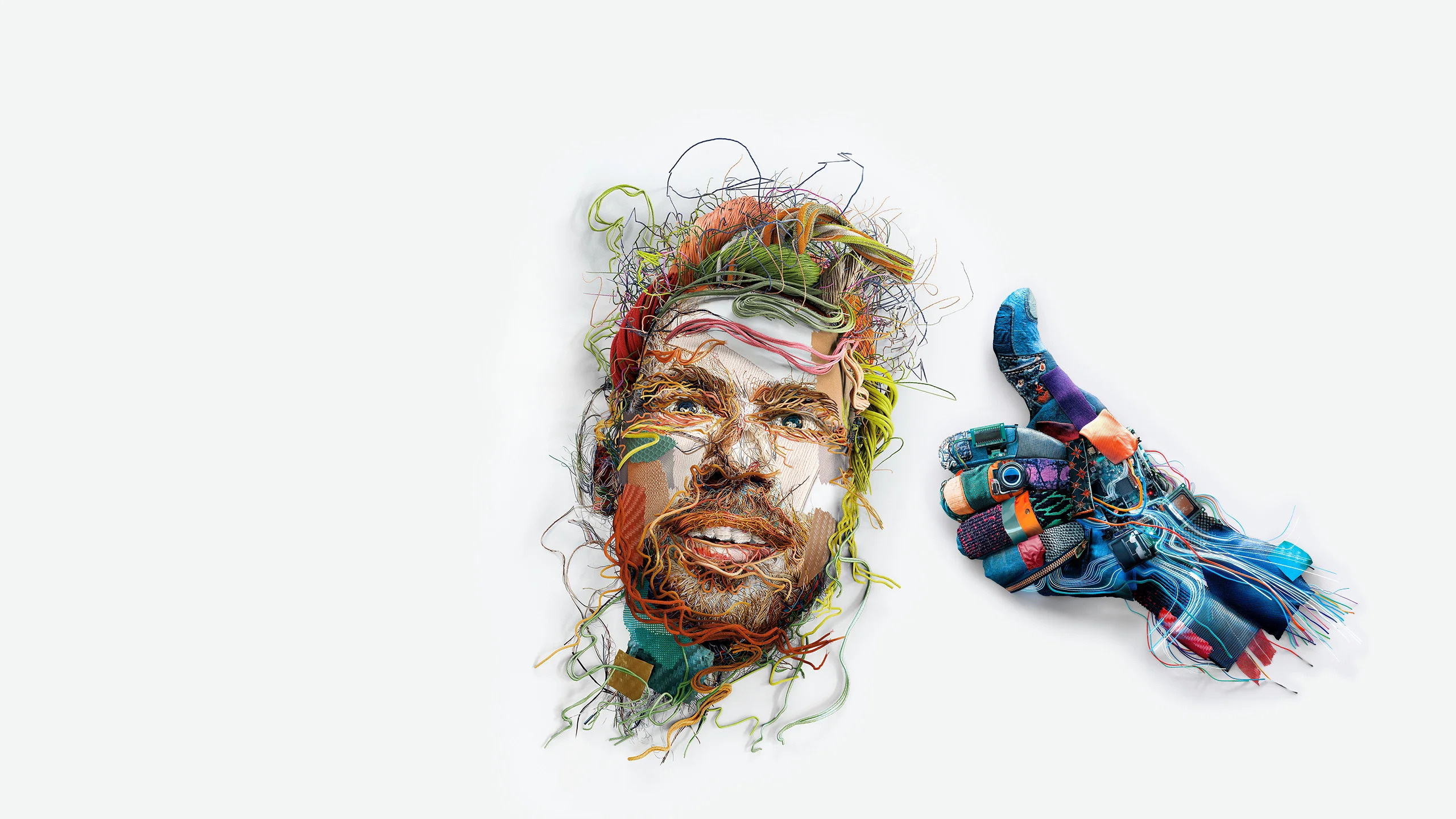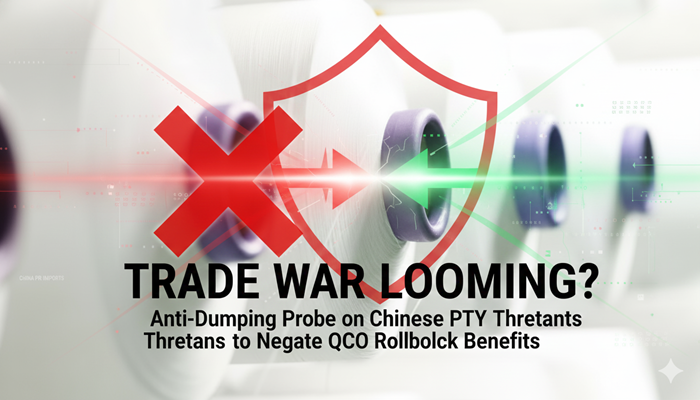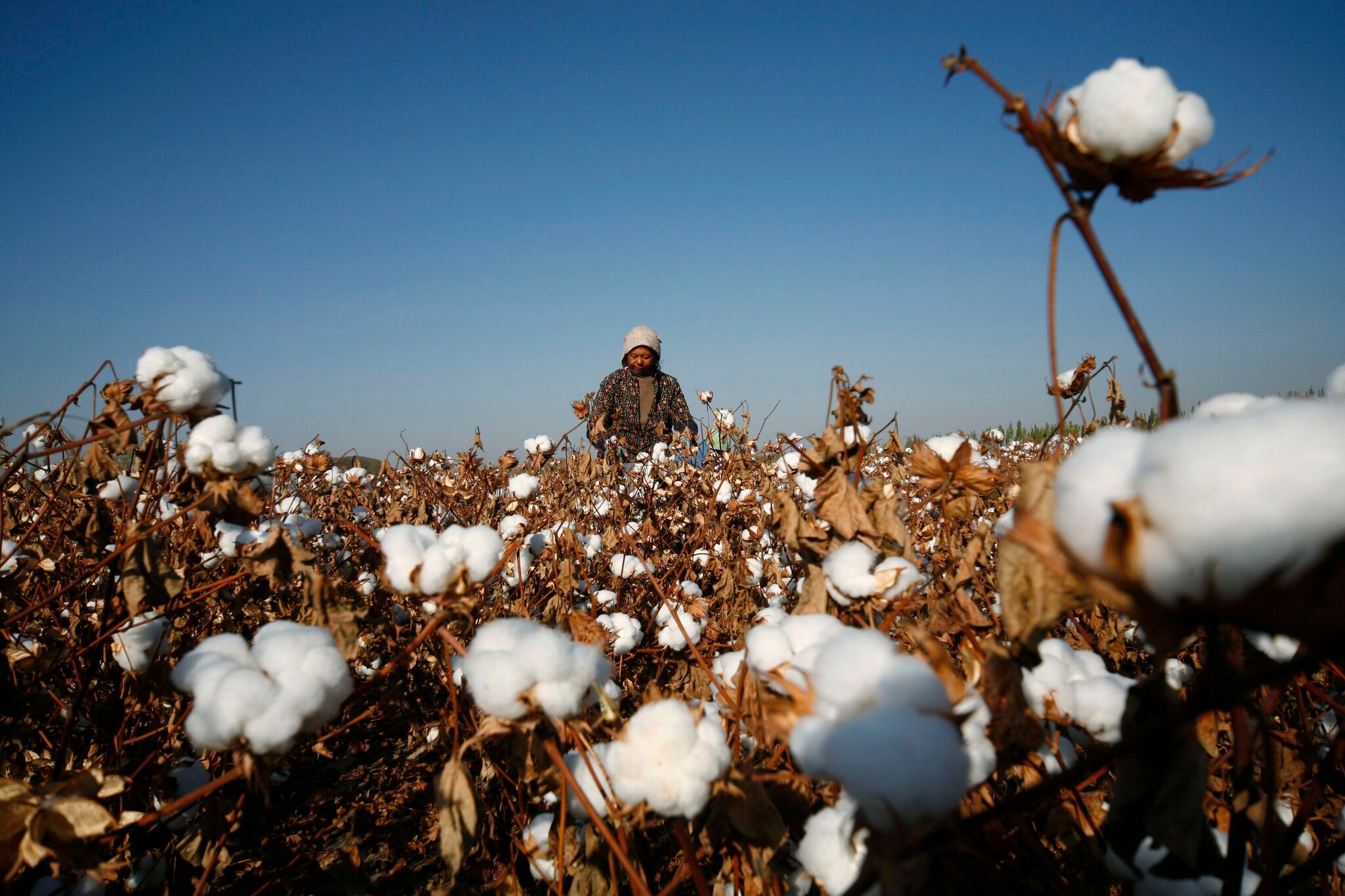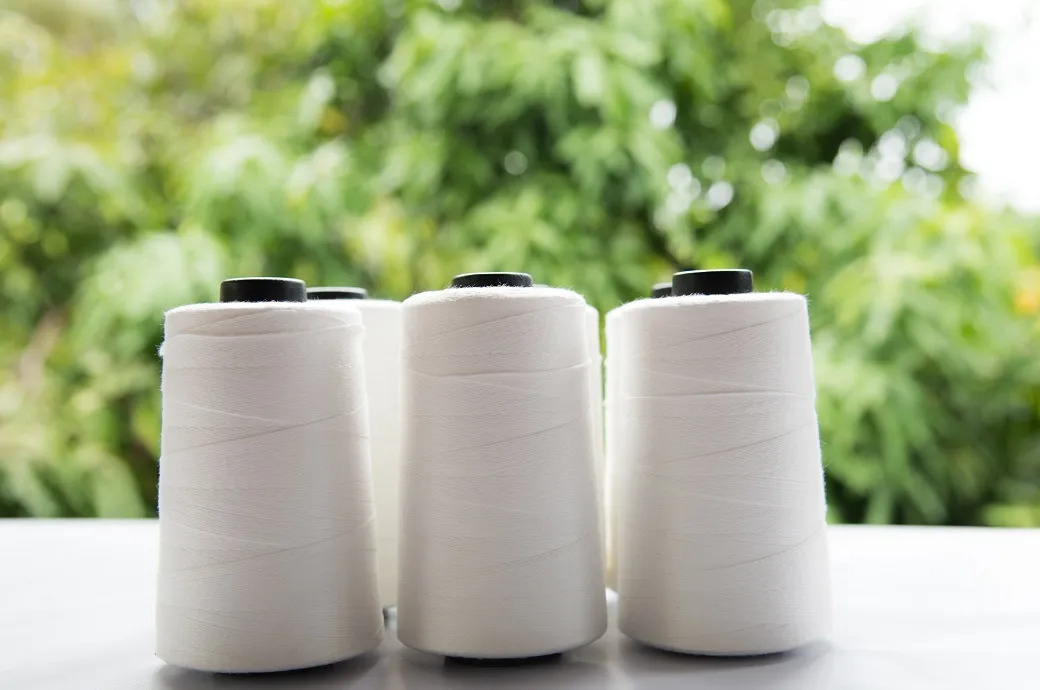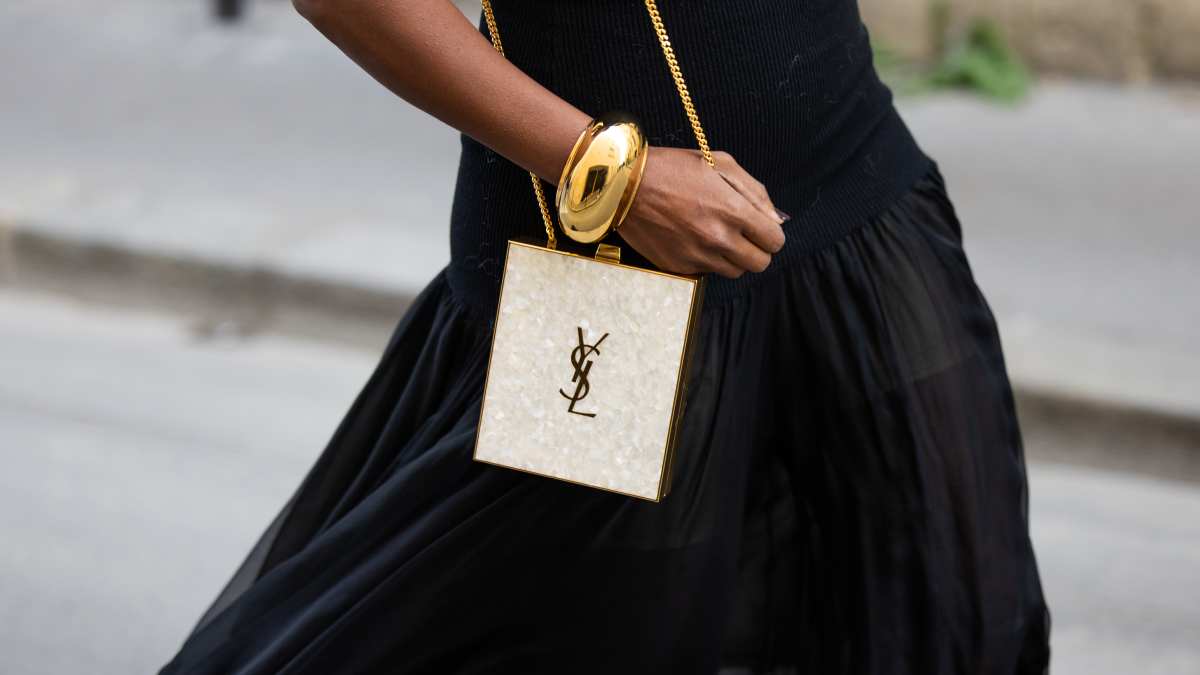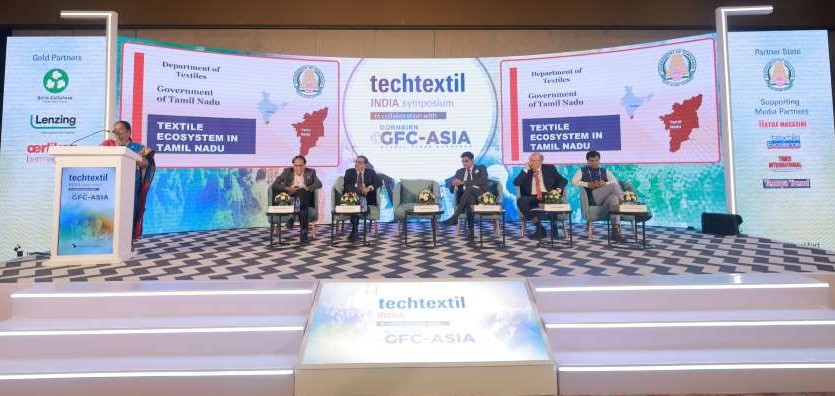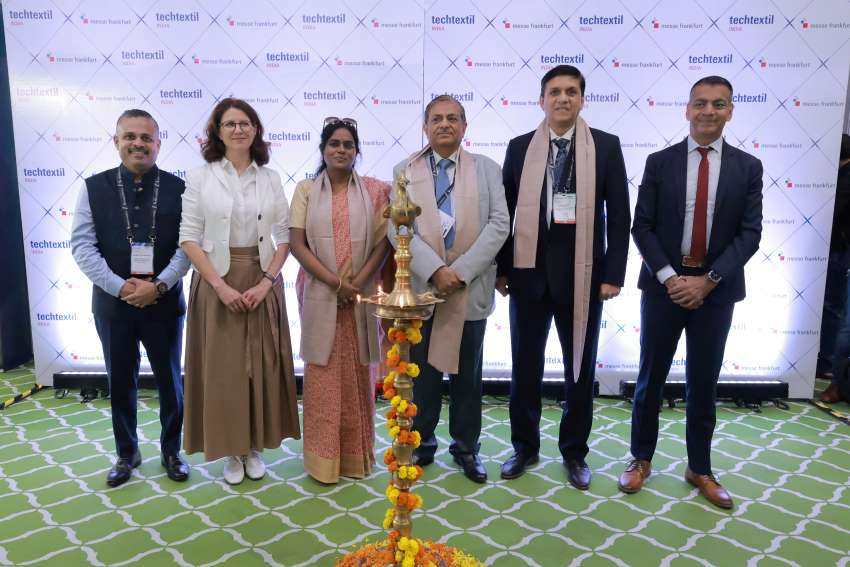FW
The Global World Cleanup Movement, with its Latvian representatives from the association ‘Pēdas LV’ and the ‘Liela Talka’ initiative will focus on textile waste and reuse for this year's World Cleanup Day on September 20.
According to World Cleanup data, the world generates approximately 92 million tons of textile waste annually. If this trend continues, that number is expected to jump to 134 million tons by 2030.
To combat excessive textile consumption and waste, discussions and masterclasses are being held to promote textile reuse, particularly within the fashion industry and for everyday use.
Starting in 2025, textile sorting will become a mandatory requirement at the EU level. Latvia began placing its first textile waste containers in 2019. Jānis Aizbalts, Chairman, Board of SIA ‘Eco Baltia vide,’ noted, ‘currently, only about a quarter of the population in Latvia sorts textiles.’ This means majority of people either keep unnecessary clothes in their closets or throw them in the trash. The organization aims to encourage everyone to start sorting their wardrobe and give excess clothing a second life. This is a chance to change their attitude towards their belongings, and every item that's responsibly sorted and placed in special containers is a step toward a cleaner environment and more mindful use of resources.
In addition to sorting textile waste, participants are encouraged to walk along local shorelines during the World Cleanup to collect any trash left behind. People can also plant their own ‘Tree of Happiness.’
In a strategic leadership change, Valentino has named Riccardo Bellini as its new chief executive officer. A seasoned professional in the luxury fashion sector, Bellini previously served as the managing director at Valentino’s parent company, Mayhoola.
Bellini will officially begin his new role at Valentino in September, stepping in for Jacopo Venturini. This appointment comes amid a broader series of executive shuffles within the fashion industry, largely influenced by market challenges in the US and China.
At Valentino, Bellini will work alongside Alessandro Michele, Creative Director who joined the fashion house last year.
Partially owned by the French luxury conglomerate Kering, Valentino, Kering is currently in a transformative phase as it navigates shifting global market conditions. Founded in 1960 by Valentino Garavani and Giancarlo Giammetti, the company has recently been in the spotlight due to its recent leadership and ownership transitions.
Michael Kors has launched its Fall 2025 campaign showcasing the brand’s latest designs. Starring brand ambassadors Suki Waterhouse and Logan Lerman, the campaign has been photographed by Lachlan Bailey in Rome, Italy.
Designer Michael Kors expressed his admiration for the location, stating, Rome is a city that inspires awe. It's cinematic, dramatic, urban and has all this incredible natural beauty and history. He believes, the city's timeless elegance, combined with the ‘laid-back elegance of Suki Waterhouse and the classic movie star energy that Logan Lerman brings,’ makes for an ‘unforgettable campaign.’
Styled by Emmanuelle Alt, the campaign evokes a sense of a never-ending adventure and a ‘main character’ aesthetic. The featured collection includes statement outerwear, fringed accents, and new silhouettes of the label’s signature Nolita and Hamilton bags. The visuals were shot at iconic Roman locations, including the Piazza Navona, the Spanish Steps, and the Fountain of Acqua Paola.
For the campaign's short films, director Samuel Rixon captured vignettes of Waterhouse and Lerman's daily lives, set to a re-recorded version of Don Henley's ‘All She Wants to Do is Dance,’ performed exclusively by Waterhouse.
In related news, Michael Kors has also announced its Fall/Winter 2025 collection ad campaign, starring model Angelina Kendall. Photographed by Inez van Lamsweerde and Vinoodh Matadin and styled by Carlos Nazario, this campaign and collection are designed to represent "everyday opulence."
Mayer & Cie will showcase its new circular knitting machine for jacquard fabrics, the Ovja 2.4 EC II alongwith its ‘Performance Line’ and advanced smart solutions at ITMA Asia 2025. The exhibition will be held from October 28-31, 2025, in Singapore.
Engineered in Germany and manufactured in China, the new OVJA 2.4 EC II is designed for customers in the dynamic markets of China and Southeast Asia. It features a new system for single-needle selection that reduces cylinder height and requires fewer knitting elements, resulting in a significant decrease in energy consumption. The machine is well-suited for producing fabrics for sportswear, leisurewear, and home textiles, such as mattress covers.
Mayer & Cie ‘s new ‘Performance Line,’ sets industry standards for productivity. This range includes D4 4.4 HPI, the world’s most productive circular knitting machine for interlock fabrics, capable of producing up to 600 kilograms per day. For double jersey structures, the OV 3.2 QCe can produce up to 650 kg of fine rib daily. The single jersey sector is represented by the Relanit 3.2 HS II and Relanit 4.0, which are known for their yarn-friendly, energy-efficient technology.
The company will also present its digital solutions, including the new Control 5.0 machine control system. This system makes circular knitting machines Internet-ready and is a prerequisite for Mayer & Cie.'s digital platform, knitlink. Another innovation on display is knithawk, an optical defect detection tool that uses infrared light to scan the fabric at the knitting point. If it detects a serious or recurring error, it automatically stops the machine, preventing wasted materials and energy.
Benjamin Mayer, Managing Partner, says, ITMA Asia is both an opportunity for customer loyalty and a door opener for new business relationships for Meyer & Cie. This year, the company celebrated its 120th anniversary, a testament to its long-standing commitment to precision and reliability in the industry.
A subsidiary of Heritage Global Inc and a global leader in asset advisory and auction services, Heritage Global Partners (HGP) has been appointed by the US Bankruptcy Court to conduct an online auction for the assets of Caastle, Inc, a former B2B clothing logistics company.
This extensive sale features commercial laundry systems, warehouse infrastructure, and a large inventory of premium branded clothing. It presents a unique chance for secondary market retailers, commercial laundry operators, third-party logistics providers, and apparel resellers to acquire valuable equipment and merchandise.
This auction offers a comprehensive collection of late-model commercial laundry systems and thousands of high-quality apparel units from top brands, says David Barkoff, Senior Vice President, Heritage Global Partners. This is a rare and ideal opportunity for buyers in fashion resale, logistics, and textile services who are looking for well-maintained, ready-to-deploy assets, he adds.
Heritage Global Partners is a leading auction, liquidation, and asset advisory firm that is a part of Heritage Global Inc.'s Industrial Assets business unit. HGP is prominent in numerous industrial sectors, including Aerospace, Automotive, Biotech, Electronics Manufacturing, Energy, Food & Beverage, and more. Globally, HGP conducts between 150 and 200 auction projects annually.
Heritage Global specializes in valuing and monetizing industrial and financial assets by offering acquisition, disposition, valuation, and lending services for surplus and distressed assets. This work supports the circular economy by preventing useful industrial assets from ending up in landfills and ensures an ethical supply chain by overseeing post-sale activities for financial assets.
Guess has partnered with Authentic Brands Group to go private in a deal that values the apparel company at approximately $1.4 billion. As part of the transaction, Authentic will acquire a 51 per cent stake in ‘substantially all’ of Guess' intellectual property (IP). A group of ‘rolling stockholders,’ including Maurice and Paul Marciano, Co-founders and Carlos Alberini, CEO will own the remaining 49 per cent of the IP. The current Guess management team will continue to run the business, holding 100 per cent ownership of the operating company.
Under the agreement, remaining Guess shareholders will receive $16.76 per share in cash. This is a higher valuation than the $13 per share non-binding offer made by WHP Global in March 2025.
As a powerhouse brand, Guess has defined style and culture for over 40 years, says Jamie Salter, Founder, Chairman, and CEO, Authentic Brands Group. The brand has tremendous respect for the Marcianos and their team and aims to build on this legacy in partnership with them as Guess enters its next chapter within our platform.
Authentic Brands Group has a vast portfolio of over 50 global brands, including major surf brands like Quiksilver, Billabong, and Volcom, which collectively generate around $32 billion in annual retail revenues.
Paul Marciano, Co-founder and Chief Creative Officer, notes, joining forces with Authentic which is the world’s second-largest licensor will enable the brand to build on this foundation and expand reach as a global lifestyle brand.
Currently, Guess operates nearly 1,100 stores in Europe, the Americas, and Asia, with an additional 527 stores run by partners and distributors worldwide.
According to Carlos Alberini, CEO operating as a private company will give Guess enhanced flexibility to navigate today’s complex operating environment and execute on a more targeted, long-term strategy, enabling us to even better serve customers around the world.
Sales of Amer Sports Inc’s Technical Apparel Unit, rose by 25 per cent in Q3, FY25. Owner of the outerwear brand Arc’teryx, the company has been witnessing declining growth and is projected to fall further.
Sales from existing locations or revenue generated from owned retail stores and e-commerce sites open at least 13 months increased by 15 per cent as against the 19 per cent expectations by the Wall Street.
Despite this, the Finnish sporting goods conglomerate remains upbeat about the future and raised its full-year outlook for a second time this year. The company projects revenue will grow by 21 per cent as against 15 per cent to 17 per cent as per a prior forecast,
The company expects full-year earnings to reaching $0.77 to $0.82 per share, up from $0.67 to $0.72 last predicted, and more than the $0.75 analysts polled by Bloomberg had expected. The guidance assumes higher tariffs than previously expected.
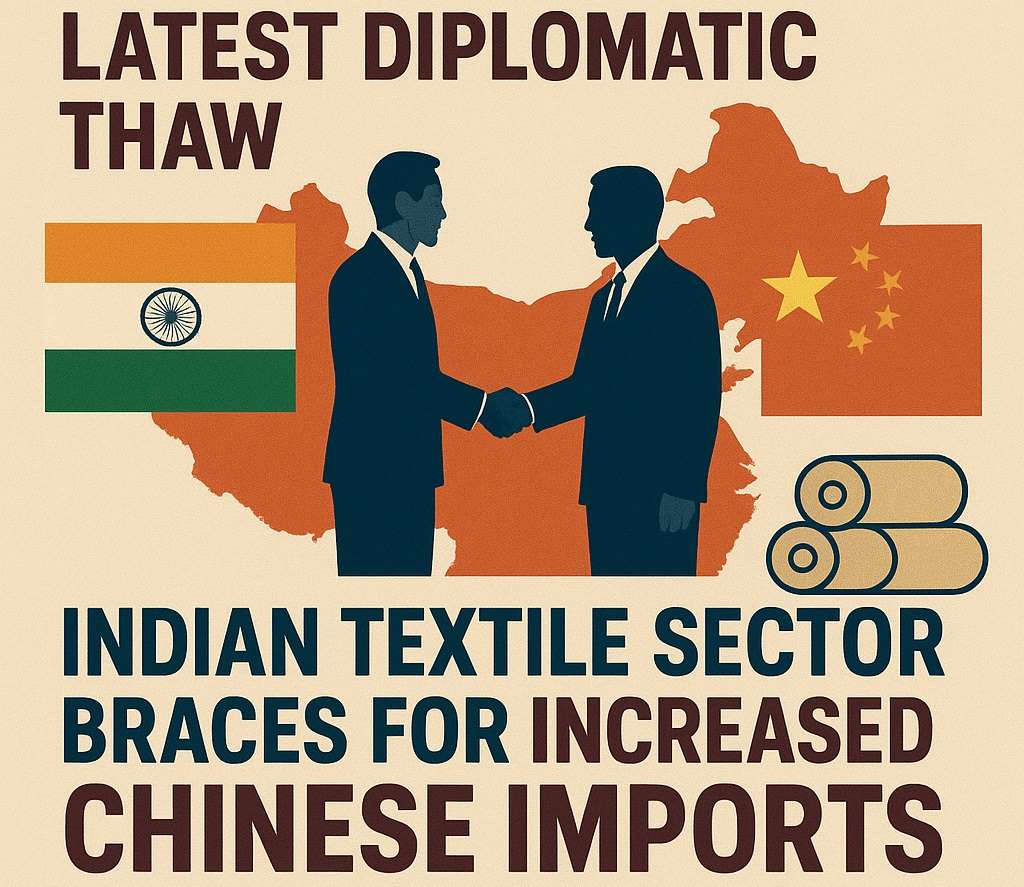
Following high-level diplomatic engagements between Indian External Affairs Minister S. Jaishankar and Chinese Foreign Minister Wang Yi, a new chapter appears to be opening in the India-China trade relationship. While a basic summary of the meeting points to a renewed focus on dialogue to ease border tensions, the most concrete outcome on the trade front has been China's decision to lift export restrictions on key commodities, including rare earth magnets and fertilizers.
This strategic shift is being closely watched by India's textile and apparel sector, where analysis indicates that while there may be some benefits, the most likely outcome is a further increase in imports from China, particularly of raw materials and machinery.
The Economic Reality: Increased imports are likely
The fundamental reason for this lies in the sheer scale and efficiency of China's textile industry, which far surpasses India's. This dominance creates a trade dynamic where India relies heavily on China for crucial inputs, a reliance that is only set to deepen with the lifting of export curbs.
Key imports from China for Indian textiles
|
Category |
Old Scenario (Restrictions) |
New Scenario (Easing) |
Likely Impact on Imports |
|
Machinery Components |
Supply Chain Disruptions |
Smoother Access, Less Downtime |
Increased. Indian manufacturers will import more to upgrade technology and ensure production stability. |
|
DAP Fertilizers |
Price Volatility, Scarcity |
Improved Supply, Cost Stabilization |
Increased. Cheaper and more reliable access to fertilizers will boost cotton yields, but imports will likely rise to meet agricultural demand. |
|
Raw Materials (Yarn, Dyes) |
Volatile Supply, Higher Costs |
Potential for Stable Supply and Lower Costs |
Increased. Lower costs and stable supply will make Chinese inputs more attractive, further cementing reliance. |
|
Finished Goods |
Competition and Trade Barriers |
Potential for Eased Access, Cheaper Goods |
Increased. China's scale advantage means it can flood the Indian market with cheaper finished products. |
This dynamic is already reflected in the significant trade deficit that India maintains with China in the textile and apparel sector.
|
Category |
India Imports from China (USD Billion) |
India Exports to China (USD Billion) |
|
Textiles & Articles |
3.5 |
0.8 |
|
Raw Materials (Yarn) |
1.2 |
0.1 |
|
Garments & Accessories |
0.8 |
0.3 |
|
Total |
5.5 |
1.2 |
Source: Ministry of Commerce and Industry, Government of India (latest available data, FY 2022-23)
The bilateral trade reality and the case for caution
While the new developments could help Indian textile manufacturers become more price-competitive in the global market, particularly in Western countries that are seeking to diversify their supply chains, the direct bilateral trade with China remains a significant challenge. Analysts argue that with its colossal production capacity, China is in a prime position to increase its exports of cheaper finished goods to India. This could exacerbate the existing trade surplus and pose a direct threat to India's domestic manufacturing base.
Tirupur and Surat industries’ heavy import dependence on China
The knitwear cluster in Tirupur and the synthetic textile industry in Surat both rely heavily on raw material imports from China. The recent developments could indeed stabilize their supply chains for inputs like yarns and dyes. However, this same opening exposes them to fierce competition from cheaper Chinese finished goods. This underscores a crucial point: the lifting of restrictions benefits India's ability to produce competitively for global markets but does not inherently provide an advantage for exporting finished goods directly to the Chinese market. Instead, it makes the Indian market a more attractive destination for China's products.
Diplomatic thaw, a double-edged sword for India's textile sector
The recent diplomatic thaw and the lifting of China's export restrictions, while seemingly beneficial, are a double-edged sword for India's textile sector. The likely outcome is a deeper reliance on Chinese raw materials and machinery, leading to an increase in imports. This, coupled with China's superior scale, could allow it to further dominate the Indian market with cheaper finished goods. While the developments offer an opportunity for India to strengthen its domestic production for global export, the challenge of a significant trade imbalance with China remains a complex and critical issue that requires strategic long-term planning.
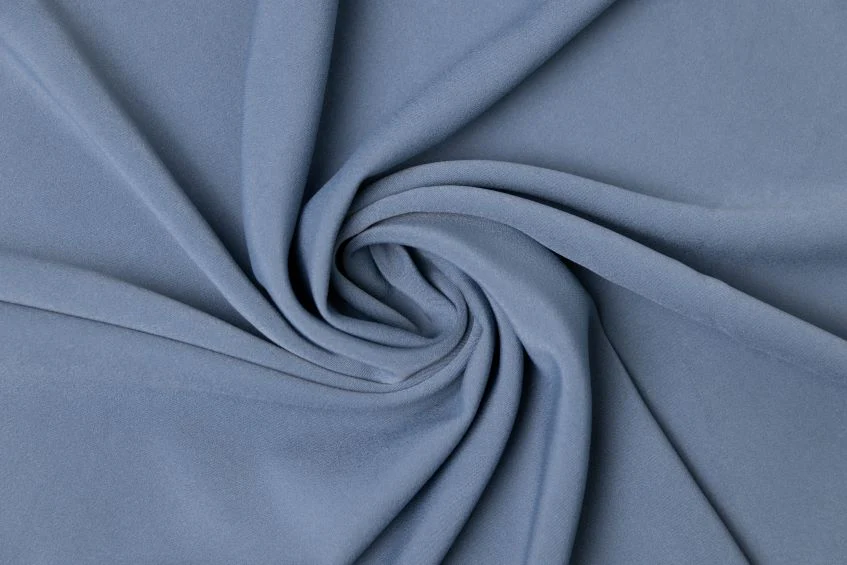
The addition of spandex yarn in the textile industry has changed the sector in many ways. While traditional metrics like yarn count (NE) and GSM (grams per square meter) have long dictated fabric quality and feel, the inclusion of spandex is adding a new layer of complexity, impacting not just a fabric's stretch but also its weight, cost, and design possibilities.
Understanding the yarn count and GSM
At its core, fabric quality is defined by two fundamental metrics:
Yarn Count (Ne): This number indicates the fineness of the yarn. A higher count (e.g., 60s, 80s) signifies a finer, more lightweight yarn, ideal for soft, breathable fabrics. Conversely, a lower count (e.g., 20s, 30s) indicates a coarser, heavier yarn used for more durable and structured materials.
Fabric GSM (grams per square meter): This metric measures the fabric's weight and density. It's a crucial indicator of a garment's intended use.
• Lightweight (100–150 GSM): Perfect for summer shirts, linings, and innerwear.
• Medium-weight (150–250 GSM): The standard for everyday T-shirts, dresses, and casual wear.
• Heavy-weight (250+ GSM): Reserved for durable items like hoodies, sweatshirts, and towels.
Adding weight and complexity
Spandex, also known as Lycra or elastane, is a synthetic fiber renowned for its exceptional elasticity. When blended with natural fibers like cotton, it provides stretch and recovery, making garments more comfortable and form-fitting. However, its impact extends beyond just elasticity; it directly influences a fabric's GSM and, consequently, its cost.
How spandex impacts GSM
Contrary to popular belief, adding spandex to a fabric blend, even in small percentages, typically increases the overall GSM. This is because spandex yarn, despite its fine appearance, is denser than most natural fibers like cotton or polyester. When a spandex filament is wrapped by or twisted with a cotton yarn, the combined yarn becomes slightly heavier. This results in a finished fabric that, for the same given yarn count, has a higher GSM than its 100 per cent cotton counterpart. For example, a 30s cotton single jersey might have a GSM of around 150-160, while a 30s cotton/5 per cent spandex blend could easily jump to 170-180 GSM.
The cost equation
The introduction of spandex also adds a layer of complexity to costing. While the primary cost is the spandex fiber itself, there are other factors at play. For example, raw material cost as spandex is a petroleum-based product and is significantly more expensive per kg than cotton or polyester. Even a small percentage can increase the raw material cost of the yarn. Moreover, special machinery and more delicate handling are often required during knitting and weaving to prevent the spandex from breaking or losing its elasticity. This can slow down production and increase operational costs.
Spandex also requires specific dyeing processes and chemical treatments to ensure the color consistency with the blended fibers. These specialized finishes can add to the overall cost. Fabrics with spandex are often marketed as "stretch" or "performance" fabrics, allowing brands to command a higher price point. This allows them to pass on the added costs to consumers who are willing to pay for the comfort and durability benefits.
GSM and cost comparison
The following hypothetical data table illustrates the impact of a simple 5 per cent spandex blend on a common single jersey fabric.
|
Fabric composition |
Yarn count (Ne) |
Typical GSM range |
Estimated cost per kg (raw fabric) |
|
100% Cotton |
30s |
150-160 |
$4.00 - $4.50 |
|
95% Cotton / 5% Spandex |
30s |
170-180 |
$5.50 - $6.00 |
|
100% Cotton |
40s |
120-130 |
$4.50 - $5.00 |
|
95% Cotton / 5% Spandex |
40s |
140-150 |
$6.00 - $6.50 |
|
Note: Costs are illustrative and subject to market fluctuations. |
As seen in the table, the 5 per cent spandex blend not only increases the fabric's GSM but also adds a substantial premium, making the fabric approximately 25-30 per cent more expensive at the raw material stage.
The bottom line for designers and consumers
The "spandex effect" is a critical consideration for designers and manufacturers. While it offers a pathway to creating more comfortable and functional apparel, it requires careful planning to balance the desired hand feel and performance with the increased weight and cost. For consumers, the price tag on a spandex-blended garment reflects not just the stretch but also the specialized processes and premium materials that went into its creation. The takeaway is clear: the modern textile landscape is no longer a simple calculation of yarn count and weight; it's an intricate dance of fibers, function, and finance, with spandex leading the way.
The ZDHC (Zero Discharge of Hazardous Chemicals) Foundation has launched a new online tool to help the textile, apparel, and footwear industries measure and manage their air emissions. Called the ZDHC Air Emissions Module, this tool is a part of the organization's broader ‘Roadmap to Zero’ program.
The tool has been designed to help companies track two main types of air pollutants: Volatile Organic Compounds (VOCs) and Greenhouse Gas (GHG) emissions (specifically Scope 1 and Scope 2)
ZDHC's philosophy is to work on ‘input chemistry’ to manage ‘output.’ The tool calculates potential VOC emissions based on the chemical inventory used in a facility's production processes. It requires suppliers to annually report their air emissions data. This helps facilities establish a baseline and track their progress toward meeting the ZDHC's Air Emissions Guidelines.
The tool aligns with the Science Based Targets Initiative (SBTi) to help companies set emission reduction goals in line with the Paris Agreement's 1.5°C pathway.
By providing a standardized way to track and report air emissions, the ZDHC aims to help the industry reduce its environmental impact and improve air quality in the communities where these facilities operate.


